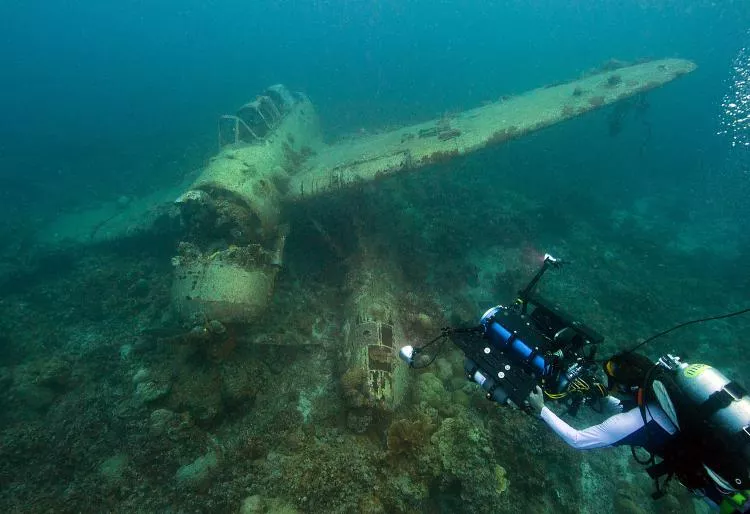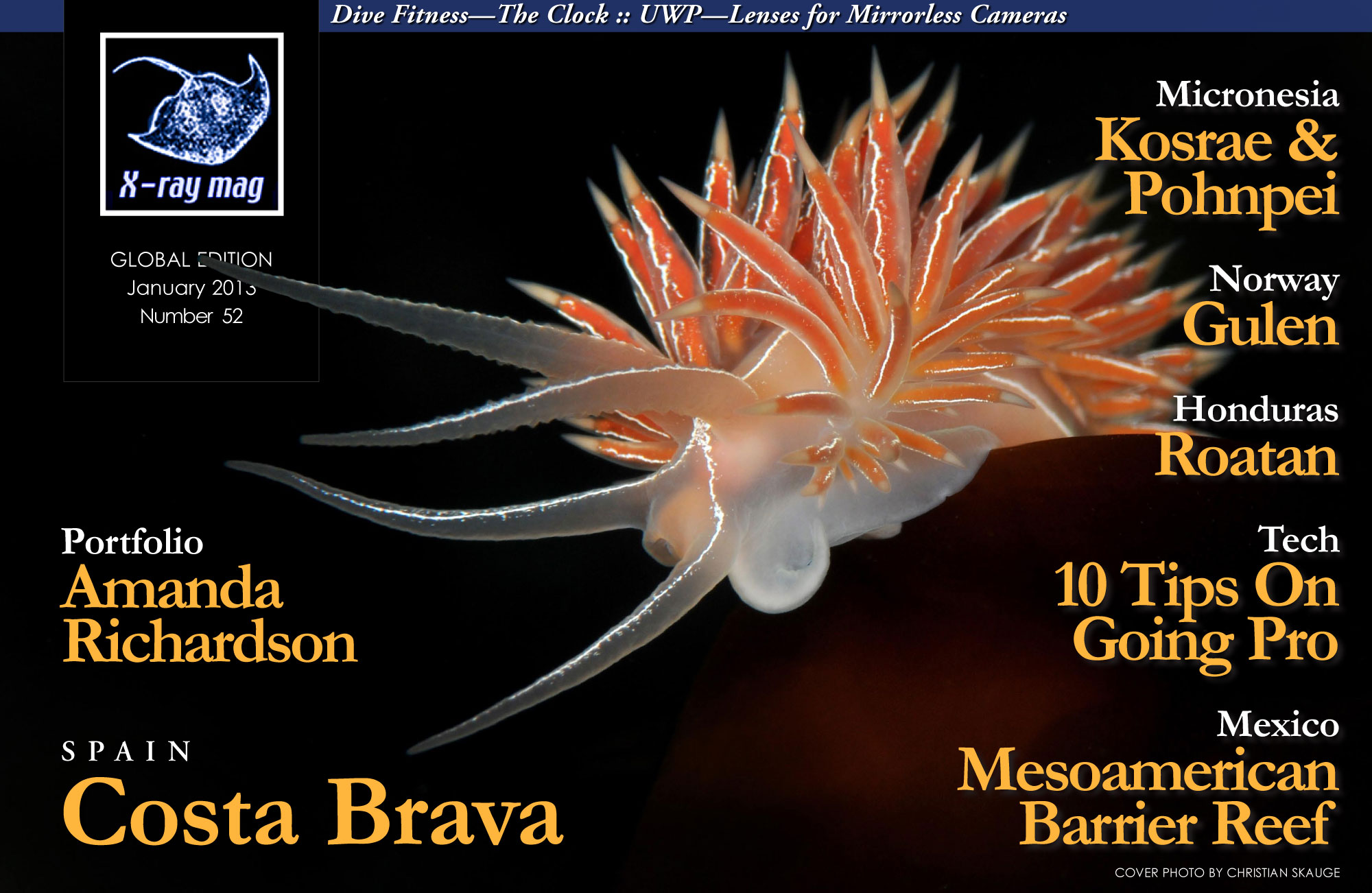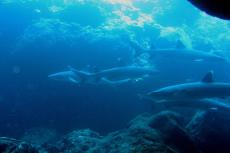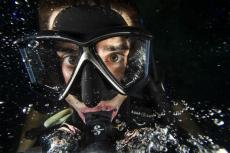Scientific diving appears to be one of the safer forms of diving, a recent study of incidences of decompression illness over ten years has found. This safety seems to be facilitated by a combination of relatively high levels of training and oversight, the predominance of shallow, no-decompression diving and, possibly, low peer or institutional pressure to complete dives under less than optimal circumstances.
Contributed by
One of the authors, diving physiologist Dr Neal W Pollock, said that whilst the AAUS (www.aaus.org) was not capturing data from all scientific dives conducted globally, this report was a reasonable snapshot of what is happening in the scientific diving community.
The paper concluded that it does appear that scientific diving is one of the safer forms of diving. This is likely due to a number of factors including:
● Low peer or institutional pressure to complete dives in less than perfect conditions
● The majority of the dives being shallow, no-decompression profiles
● Relatively high levels of training and ongoing supervision
The following is a summary of the paper, "Review of decompression illness in ten years of scientific diving".
Scientific diving is conducted as part of a scientific research or educational activity under the auspices of a scientific diving program. Scientific dives are conducted worldwide using a wide range of modalities to address a wide range of goals. The incidence rates for decompression illness (DCI) in scientific diving are generally held to be low when compared to estimates for commercial and military diving communities, but the published data are limited.
The American Academy of Underwater Sciences (AAUS) represents organizational members, primarily but not exclusively U.S.-based, involved in scientific diving. AAUS members submit annual summaries of dives and any incidents, making AAUS a major source of data on scientific diving in North America. This article is based on a paper evaluating AAUS records that was published in the scientific literature. Additional details, statistics and complete references are available in the source paper.
Methods
The study reviewed ten years of diving records reported by AAUS organizational members, from 1998 through 2007. The research was approved by the Divers Alert Network institutional review board. All submitted incident reports were reviewed by a panel and classified by injury.
The goal was to investigate the incidence of DCI. Contentious or incompletely documented cases were further investigated through interviews with involved persons. Ambiguous cases were considered to be cases of DCI for the computation of incidence rates. The rates are based on person-dives, that is, as individual exposures even when diving is typically conducted in teams of two or more.
Results
The number of person-dives tallied annually ranged from 68,598 to 126,831. The ten-year study period captured 1,019,159 person-dives and 102 incidents occurring in conjunction with these exposures. Ultimately, 33 of the incidents were classified as DCI, 25 with clear symptoms and eight with ambiguous symptoms. Recompression therapy was reported to be successful in 28 of the 33 DCI cases; 19 with a single treatment and nine with multiple treatments.1
The 33 DCI cases yielded a DCI incidence rate of 0.324 per 10,000 person-dives. The distribution of maximum depth for all reported dives and for those followed by reports of DCI are found in Figure 1.
Discussion
DCI is a relatively rare event, requiring long term study to capture a substantial number of cases. DAN’s Project Dive Exploration provides such a long term study, yielding estimates of DCI incidence rates in the recreational community between 2.0–4.0/10,000 person-dives. DCS rates among divemasters and instructors have been estimated at 12.7-15.2/10,000 person-dives. Shallow no-decompression dives among navy divers has produced DCS incidence rates of 2.9/10,000 person-dives. The DCS incidence rate in commercial decompression diving has been reported to be as high as 35.3/10,000 person-dives. The estimate ranges for the other diving disciplines were higher than found for the AAUS scientific diving.
Supervision of scientific diving activity includes oversight at community, organizational and team levels. At a community level, AAUS consensual standards for scientific diving require periodic medical examination, recurrent training in diving accident management and documentation of diving proficiency. At the organizational level, Diving Control Boards set institutional policy and Diving Safety Officers review and approve dive plans, often providing direct on-site supervision of dives. At the team level, individual divers, trained in dive accident management and advanced diving techniques specific to their scientific diving tasks, ultimately have the responsibility to terminate any dive they consider unsafe. A good safety record is expected for scientific diving given the layers of oversight and, hopefully, a prioritization of safety over operational completion.
There are several limitations to risk estimate studies. Risk estimate efforts typically suffer from a lack of information on the total number of dives conducted, the so-called denominator of the equation. This problem is largely absent in the study of scientific diving described here since both the injuries and all dive counts were regularly reported.
There is also the possibility of under-reporting adverse events. However, since there is no punitive action associated with reporting incidents, accuracy is favored.
Misdiagnosis is another potential issue, but one that was reduced by the review panel using all information available after the fact.
Fair representation of the community is another issue of any study. The AAUS partially addressed this by representing a diverse and substantial number of dives, but it is important to acknowledge that there are many agencies and organizations conducting scientific diving that do not report diving activity to AAUS.
Despite the limitations of this study and many others evaluating diving risk, it does appear that scientific diving represents one of the safer forms of diving. This safety may be facilitated by a combination of relatively high levels of training and oversight, the predominance of shallow, no-decompression diving and, possibly, low peer or institutional pressure to complete dives under less than optimal circumstances.
Additional research to compare the decompression stress of actual exposures, the pressure to conduct dives, reporting practices, and other variables that exist between the diving sub-fields could provide useful insights to understand the real risks. ■
References
1. Dardeau MR, Pollock NW, McDonald CM, Lang MA. The incidence of decompression illness in 10 years of scientific diving. Diving Hyperb Med. 2012; 42(4): 195-200.
Published in
- Log in to post comments



























